Organization
Looking Ahead
Each Unit opens with a set of three focusing questions that reflect the major mathematical goal(s) of the Unit. These questions are intended to draw students into the Unit, pique their curiosity, and point to the kinds of ideas they will investigate. As the students move through the Unit they will encounter these questions either as a part of a Problem to explore in class or as ACE homework.
Mathematical Highlights
Mathematical Highlights are a set of student-friendly goals that preview the important ideas of the Unit. The highlights help students track their progress through the Unit and provide parents and guardians with an overview of the mathematical concepts, processes, and ways of thinking developed in the Unit.
Investigations
The Investigations form the core of a Unit. Each Unit includes three to five Investigations with the following key elements:
- Problems
- Applications-Connections-Extensions
- Mathematical Reflections
- Mathematical Practices Reflections
Each Investigation builds toward the mathematical goals of the unit.
Problems
Problems start with an introduction. The introduction connects the Problem to prior knowledge, describes the context of the Problem, and provides the challenge. The connections in the introduction are often made with questions to guide the teacher and students. These questions are intended to be answered by students as part of the Launch.
When appropriate, the last one of the Launch questions is called out by an icon with a question mark and “boxed” because it captures the essence of the Problem and is answered during the Explore. Experienced teachers may use this boxed question to open up the Problem or to replace parts or all of the questions in the Problem.
Each Problem consists of a set of questions that students explore during class. As students solve the problem they uncover important mathematical relationships and develop problem-solving strategies and skills related to the goals of the Unit.
Occasionally, there is a Did You Know? feature within a Problem that presents interesting facts related to the context of an investigation.
Applications-Connections-Extensions (ACE)
The last Problem in each Investigation is followed by a set of exercises meant to be used as homework. In the exercises, students are asked to compare, visualize, model, measure, count, reason, connect, and/or communicate their ideas in writing. To truly own an idea, strategy, or concept, a student must apply it, connect it to what he or she already knows or has experienced, and seek ways to extend or generalize it.
The exercises are categorized into Applications, Connections, and Extensions (ACE): The Applications help students solidify their understanding by providing practice with ideas and strategies that were in the Investigation. Applications contain contexts both similar to and different from those in the Investigation.
The Connections provide the opportunity for students to connect new knowledge to prior learning—a powerful learning strategy. This section also provides continued review of concepts and skills across the grades. For example, the Connections in Covering and Surrounding, a Unit on measurement, contain practice with operations on decimals and fractions for the most part without context. Connections can connect to “real-world problems.” Often these are problems that contain original data sets. For example, in Moving Straight Ahead, a Unit on linear relationships, there are connections to sports records.
The Extensions may provide a challenge for students to think beyond what is covered in class, provide an interesting excursion “side ways” that looks at related mathematical ideas, foreshadow mathematics in future Units, or pursue an interesting application.
Mathematics & Practice Reflections
At the end of each Investigation, students reflect on what they have learned in the Mathematical Reflections. This set of questions helps students organize their thoughts and summarize important concepts and strategies. After thinking about the questions and sketching their own ideas, students discuss the questions with their teacher and their classmates and then write a summary of their findings. Reflection questions help teachers assess student understanding of the “big” ideas.
The Mathematical Reflections end with an example of student thinking for one of the Standards for Mathematical Practice. Students are asked to study the example and comment on other Mathematical Practices that are reflected in the example. Then they are asked to think of other examples they used during the Investigation.
These two features within the Mathematical Reflections encourage students to take ownership for their mathematical understanding and reasoning and recognize the role the Mathematical Practices play every day as they work on Problems.
Unit Project
Each grade level includes three to four unit projects. Projects are typically introduced at the beginning of a Unit and formally assigned at the end of the Unit. Projects are open-ended tasks that provide opportunities for students to engage in independent work and to demonstrate their broad understanding of the mathematics in the Unit. The following project is from Prime Time.
List of Projects Grade 6
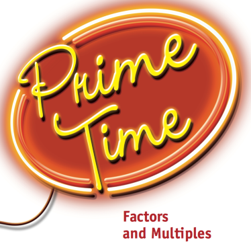 Unit Prime Time - Project "My Special Numbers"
Unit Prime Time - Project "My Special Numbers"
Students choose a "special number" and use all they have learned in the Unit to describe mathematical properties and real-world applications or occurrences of their numbers.
 Unit "Covering and Surrounding" - Project "Design an Aquarium"
Unit "Covering and Surrounding" - Project "Design an Aquarium"
Students draw a floor plan for an aquarium, make flat patterns to represent miniatures, and submit a written proposal highlighting the features of their aquarium.
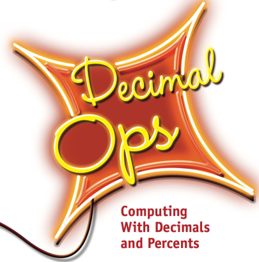 Unit "Decimal Ops" - Project "Ordering From a Catalog"
Unit "Decimal Ops" - Project "Ordering From a Catalog"
Students select items from a catalog and fill out an order form, calculating shipping, tax, and discounts.
 Unit "Data About Us" - Project "Is Anyone Typical?"
Unit "Data About Us" - Project "Is Anyone Typical?"
Students apply what they have learned in the Unit to gather, organize, analyze, interpret, and information about the "typical" middle school student.
List of Projects Grade 7
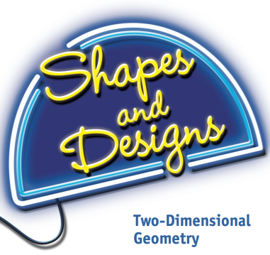 Unit "Shapes and Designs" - Project "What I Know About Shapes and Designs"
Unit "Shapes and Designs" - Project "What I Know About Shapes and Designs"
Students create representations of what they have learned about various polygons, the relationships of their sides and angles, and where these shapes can be found in their world.
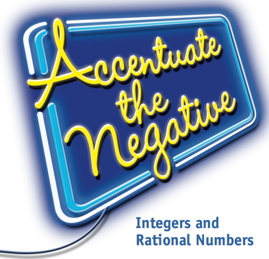 Unit "Accentuate the Negative" - Project "Dealing Down"
Unit "Accentuate the Negative" - Project "Dealing Down"
Students apply what they have learned to a game. They then write a report explaining their strategies and their use of mathematics.
 Unit "Stretching and Shrinking" - Project "Shrinking or Enlarging Pictures"
Unit "Stretching and Shrinking" - Project "Shrinking or Enlarging Pictures"
Students shrink or enlarge a drawing or photograph by hand. They then analyze the relationships among the lengths, areas, and angle measurements of the original and those of the new drawing.
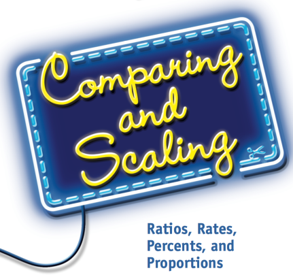 Unit "Comparing and Scaling" - Project "Paper Pool"
Unit "Comparing and Scaling" - Project "Paper Pool"
Students look at several simplified pool tables to determine the number of hits a ball will make before it goes into a pocket and the pocket in which it will land. They use their results to make predictions for other tables.
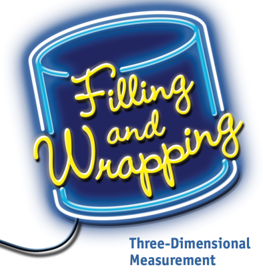 Unit "Filling and Wrapping" - Project "Package Design Content"
Unit "Filling and Wrapping" - Project "Package Design Content"
Students design packages for table-tennis balls, calculate the costs of their packages and justify the designs of their packages.
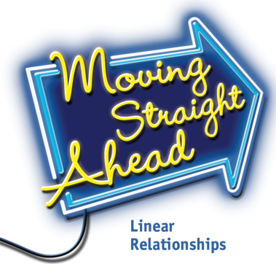 Unit "Moving Straight Ahead" - Project "Conducting an Experiment"
Unit "Moving Straight Ahead" - Project "Conducting an Experiment"
Students collect data about dripping water or rebounding balls and make predictions based on their data.
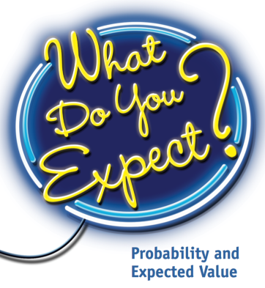 Unit "What Do You Expect?" - Project "The Carnival Game"
Unit "What Do You Expect?" - Project "The Carnival Game"
Students design carnival games and analyze the probabilities of winning and the expected values. They then write a report explaining why their game should be included in the school carnival.
List of Projects Grade 8
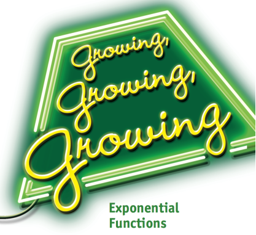 Unit "Growing, Growing, Growing" - Project "Half-Life"
Unit "Growing, Growing, Growing" - Project "Half-Life"
Students use cubes to simulate the radioactive decay of a substance and estimate its half-life. They then create a new situation involving radioactive decay and design and carry out their own simulation.
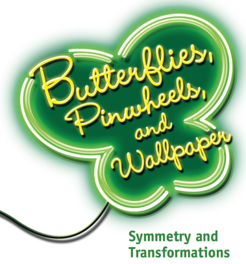 Unit "Butterflies, Pinwheels, and Wallpaper" - Project "Making a Wreath and a Pinwheel"
Unit "Butterflies, Pinwheels, and Wallpaper" - Project "Making a Wreath and a Pinwheel"
Students make an origami wreath and transform it into a pinwheel. They investigate and describe the symmetries of their creation at various stages.
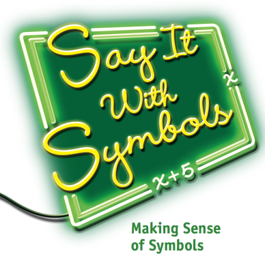 Unit "Say It With Symbols" - Project "Finding the Surface Area of Rod Stacks"
Unit "Say It With Symbols" - Project "Finding the Surface Area of Rod Stacks"
Students find the volume and surface area of stacks and rods. They look for patterns and then apply what they have learned about writing algebraic expressions to describe patterns that they observe and verify the equivalence of those expressions.
Looking Back
This feature provides a review of the “big ideas” and connections in the Unit. It includes questions that allow students to demonstrate their understanding, explain their reasoning, summarize, and connect what they have learned across the Unit.
Glossary
Although students are encouraged to develop their own definitions and examples for key terms, each student edition includes an English/Spanish glossary. Student Place includes a digital glossary that also contains audio support for each term. Glossaries can serve as a guide for the student, the teacher, and parents, as students develop an understanding of key ideas and strategies.